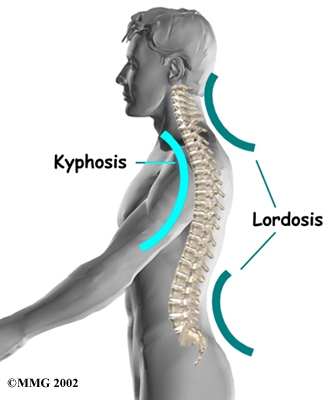Several weeks ago, I received no fewer than 4 phone calls as a result of Dan John’s Dragon Door seminar (https://danjohn.net/) with the same line of questioning. The topic was the positioning of the neck during hip hinge lifts such as the DL and KB Swing. The questions arose since these individuals that I have coached were seeing a completely different approach to optimal cervical position during these lifts. I teach what I call the neck “packed”, which is strong cervical retrusion with capital flexion. It basically looks like you are making an unattractive double chin and feeling a lot of pressure in the cervical spine.
Indeed Coach John teaches, as many other elite Olympic Lifting coaches and RKCs do as well, protruding the neck as if to “look out to the horizon.” I rewatched his Kettlebell and Olympic Lifting videos, and the message is very consistent to basically be the exact opposite of what I’m suggesting.
Now I could show a bunch of picture of elite guys in all the lifts demonstrating both of these techniques/positions in the lifts. For every one showing one, there will be another picture showing the other. Rather than get into, well “this guy” does it, so it must be okay, a never ending foray, I am fairly confident that I can explain why it’s valuable to keep the neck in the “packed” position. What I struggle with is when this information is provided, there is not a point counter-point for looking out at the horizon. What I can not accept is “We don’t see a problem.” “We don’t see a problem” is getting to seem more and more as a translation to “Wow, you’re totally right, but I don’t want to change what I’m doing.”
I’m going to try to tell you why my way is good with anecdotal results and soft science. Usually the retort is just anecdotal results. I’d like to hear why I’m wrong, or why what I’m saying doesn’t matter.
We don't see a problem? Either you're not looking in the right place, or you just haven't seen a problem.........yet.
Thomas Phillips, a Senior RKC, myself, and Steve Pucciarelli @ Fit For Like in Marlboro, NJ have worked on this neck technique for at least a year, and in fact, this is not just a safety issue. It’s a safety issue and performance issue. Spinal stabilization as I will describe in a few ways below not only allows for a healthy buttress of the core, but that in turn allows for more hip mobility and in turn a more free expression of powerful hip extension. It’s never a coincidence that the positions of integrity are also the positions that make a monster. I believe Tom has expressed these same thoughts to the RKC crowd for some time.
Some things to consider (from a post on StrengthCoach.com).

1. The neck must always demonstrate physiological range of motion: flexion, extension, rotation, side bending. But when considering an aggressive hip hinge like the Swing or DL, there is 1 long spine. We hear long spine, tall spine very often as a global cue in how to set the core. When you consider the spine as 1 entity, 1 chain of links with regions that are easier to move than others, we should consider that whatever happens in one of those areas will be compensated or met with a similar position elsewhere. Basically what I’m saying is whatever happens in the neck is going to happen in the lumbar spine.
And if you saw someone Swing or DL with a hyper-lordosis, you would probably correct it. Well, hyper-lordosis in the neck is the same thing as I see it. And what feels like neutral or natural for most people is probably hyper-lordosis. Almost all of us are always in some level of anterior tilt in the pelvis and cervical spine. This anterior tilt creates bony approximation, and that bony approximation tells the brain, “Hey, we’re good down here. We have stability from bones being closer togther. We don’t need any inner core. You guys can take a break.”
Think of the natural curves of the spine. They are the way they are to balance other and resists compression and accomodate shear. The spine is a pogo stick so when forces travel up from the floor, there is a springed attenuation.
If you increase the curve up at the neck with extension, that natural compensation is 1) maintain the anti-compressive spring and 2) increase the curves at the lumbar spine and thoracic spine to balance out the weight shift.
So if you look out at the horizon, you are DEstabilizing the neck, and that will trickle down to the lumbar spine. There may not visually appear to be a correction required, but this is the makings of a high-threshold strategy.

Look down. I'm tellin' ya.
2. This 2nd point is a more lay approach. Try this little experiment. Stand firmly with a long spine and chin tucked hard. Do this up against a wall and try to wiggle your head as high as you can. You will be in the neck position I want. And by the way, if you try stretching the hip flexor in 1/2 kneeling with this neck position, you’ll be more of a believer.
Now brace the lumbar spine as you see fit. Have someone shove you while you try to hold your ground. You will feel strong and stiff.
Now let your neck go relaxed. Brace again, but keep the neck relaxed and just let it extend a little bit. Trust your partner to shove you again with the same exact force. Take a 3rd shove with your neck extended at the same angle where it would be looking at the horizon. You will not take the shove as well as you did with the neck packed.
So if you are weaker with neck extended in standing, why would you want your neck extended in the gorilla position or in the hole of a hip-snap when you need stability and integrity the most?
3. Allowing the neck out of centration in a dynamic stability effort inhibits the deep neck flexors. The SCM and scalenes should be secondary stabilizers as their role and development phylogenetically are not to hold the neck still, but rather allow for fast twitch rotation or motion when necessary to detect of avoid danger. Inhibiting the deep neck flexors is a HUGE mistake as then the reflexive core of diaphragm, multifidus, TA, pelvic floor will also be inhibited. This is quite evidence-based.
This doesn’t mean these muscles don’t turn on. It means they are inhibited and have a delayed pattern of activation. This is Hodges, Kolar, Dalcourt, many others, and I think Gray and Kyle would say the same as well. Without the primary tonic stabilizers timed well, the body goes to a high threshold and form closure through L5-S1. This is what I described above from a different point of view.
Decentration of the neck can also foster scapular instability. With the neck poorly stabilized, the T-spine approximates ever so slightly into flexion, and the scaps ride up a little big, and the lower trap is inhibited. Yes, I believe this all comes from letting your neck slide back a little bit. It does matter. It does.

Do not ignore these. This is where the parachute starts.
4. Try another experiment. Lock neck back the way I want you to. Take a few deep breaths without losing the neck. Now try with the neck extended. I don’t think many people will honestly say it feels the same. The breath will be bigger and less tensioned with the neck packed.
When you keep the neck packed, with practice the hinge will be more natural, just like when you use the dowel with the MRE/LRF hand hold position. We try to correct the hip hinge with this neck position, the neck position when you can breath more freely and classic, and then give it away when you add load? Also if you keep the neck packed, the bell swings towards the private area as desired. The gravity towards the “squat swing” is greatly diminished.

THANK YOU!
You can try this position in pushups, planks, chops/lifts, ASLR. You will find that the technique like ASLR improves greatly, or the pushup becomes much harder. Many will suggest this neck position limits power production, and I agree……..in the beginning. It will take practice to remodel the motor plan that is grounded in strength and speed. Teaching this neck technique for a novice lifter will get them out of it much quicker. The fact of the matter is that Tom and I have gotten PRs with our people in NJ after months of this position in the Squat and DL.
If you can breath easier amidst an awesome expression of stability and strength, there is a harness on a power source not accessible without the packed neck. The more neuromuscular and biomechanical reasons are the same as above.
5. Pulling the neck into retrustion or a tight glute squeeze is posterior pelvic tilting, not an end-range posterior pelvic tilt. There is no reversal of the curve. It’s actually bringing the pelvis and neck into neutral since I think most if not all of us hang in the -crossed pattern(s) to some degree. This is where we get the common dull neck or low back soreness that even the most fit folks have. It’s a very low level of bony approximation to “hang” on our postures.
When you consider packing the neck or squeezing the but, it goes back even to the stabilization protocols of Robin McKenzie in locking up the lower c-spine and fostering some upper cervical (capital) motion above C4. This is the Joint by Joint in motion. This integrity is tampered with even with a little extension.
What are the chances this guy does swings with his neck like this? What are the chances this guy does swings?
6. If you go back to that little shoving experiment, you can say the reason you lose stability is from the loss of vestibular input from a loss of vision. You are correct. But this loss of vestibulo-ocular (or spino-ocular) reflex can be restored with eye movement.
Instead of the neck moving into flexion and extension, the eyes follow the hip hinge. Oral-facial drivers are enormous generators of hidden strength. The eyes drive downwards on the descent of a squat or Swing, and they look up to the ceiling on the ascent.
Again, it is very, very hard to break into the firm motor patterns of such moves as Swings and O-Lifts, but the eye movements are worth huge firepower and tie in to everything else that I am talking about in terms of spinal stability.









